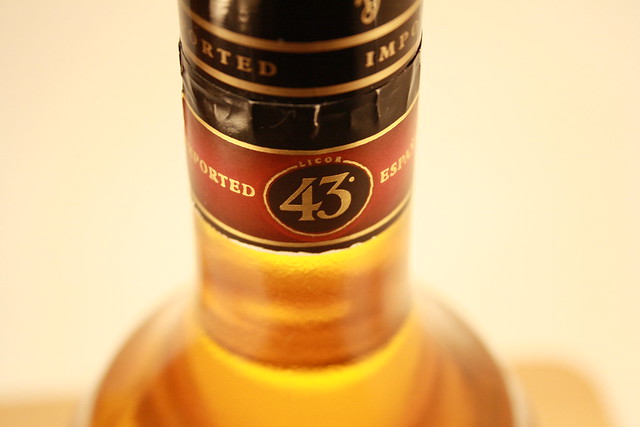The secret of Cartagena

Let's set out some basics. As always, there's a sponsor. Today - and by today, I mean Monday past - it's Licor 43. There's a prize. It's a good one, too: today's winner will join a trip to Spain in September with finalists from four other UK regions before competing for a 12 month contract as a brand ambassador for Licor 43. And there's a brief - present a twist on a vanilla Daiquiri along with a pair of "seasonal" cocktails. There's an easy way of doing seasonal, and there's the other way. The easy, logical way is to incorporate fresh, seasonal produce into a recipe. The more obscure path would be to think of what drinks represent a particular season and build out from there, and so: summer. Long evenings and lazy sunsets and all you really want is something long and refreshing. Outside of cocktails and spirit-based mixed drinks, there's one drink you'll see on terraces and porches all through summer - the white wine spritzer.
Sure, it's refreshing, but does the humble spritzer represent an appropriate template for a cocktail? Perhaps not, but in this particular instance, maybe it does.
There's a question over where we start the story. We could go with the 1960s and the international launch of Licor 43. It will go on to become Spain's most successful export liqueur, available in 55 markets worldwide. We could go back to 1924, and find Diego, Angel, and Josefina Zamora Conesa taking over a small distillery in Cartagena, Spain, and - with Josefina's husband - starting to make a liqueur built on the heritage of Liquor Mirabilis, an ancient recipe that had endured in secret through centuries of political shenanigans.
In 228 BC, the Carthaginian general Hasdrubal established a new capital on the south-eastern coast of modern-day Spain. The founding of Cartago Nova - New Carthage - marked the first step in the creation of a private empire used by Hasdrubal and, later, his brother-in-law Hannibal as a staging post for an audacious invasion of the Mediterranean's other nascent superpower: Rome.
The transformation of small town once known as Mastia into a major port and the centre of Carthage's Iberian territories gave rise to a number of opportunities and local alchemists wasted no time in combining local herbs and spices with those imported from North Africa and using these botanicals to flavour wine. Of these pre-distillation liqueurs, Mirabilis was said to be the most popular.
The old saying about all good things held true. In 209 BC, Scipio Africanus brought Roman retribution to Cartago Nova. Whether it was through an idealogical crusade, or simply the over-enthusiasm of victorious conqueurors, the local wineries were smashed and Mirabilis was driven underground. The recipe was passed between locals and kept alive as Cartago Nova passed from Roman rule in 409 and through no less than twelve different regimes until it was conquered by the Kingdom of Aragon in 1245. From the Carthaginians to the Romans to the Aragonese to the Zamora family, wine is a major part of the heritage of Mirabilis and Licor 43, and so, maybe it's fitting to look to wine for inspiration.
Luminoso Y Elegante
25ml Licor 43
25ml Greenall's Bloom
1 barspoon Maraschino
1 dash Fee Brothers Peach Bitters
10ml Champagne
Stir the first four ingredients with ice and strain into an ice-filled wine glass. Top with Champagne and garnish with a lemon zest and a cherry.
The old saying about all good things still holds true. There's no Spanish holiday for me, so congratulations to Tigerlily's Joey Medrington and thanks to everyone at Licor 43 and Wray & Nephew for setting up the comp, and to the lovely guys at the Raconteur for hosting.